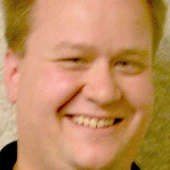- Gorgeous visuals, charming characters fill Disney's 'Big Hero 6' (11/13/14)
- 'Fury' covers the same ground as other war movies (11/6/14)
- Murray finds his career-best role in 'St. Vincent' (10/31/14)
- My 'Odd' goodbye to working on the McCook stage (10/24/14)
- My 'Odd' goodbye to working on the McCook stage (10/23/14)
- Fall TV coverage: FOX aiming to keep their cool points (10/2/14)
- Fall TV coverage: CBS pins fall hopes on procedurals, NFL (9/25/14)
Opinion
Downey makes new 'Holmes' worth seeing
Wednesday, December 28, 2011
I remember going to see the first of the recent "Sherlock Holmes" films in a theater, looking forward to seeing how Robert Downey, Jr., would accord himself. Downey is widely considered one of the better actors of his generation; even when he's starring in special effects-laden extravaganzas (which seems to be all the time nowadays), his charisma and live-wire energy makes him pop off the screen as much as the CGI.
I admit that while I genuinely liked Downey's first turn as the legendary detective, I begrudgingly liked the movie as a whole, mainly because it was a movie that was chock-a-block with stylishly shot -- and tooth-rattlingly loud -- action sequences. Director Guy Ritchie apparently loves to play with physics on film, especially when it involves the effect of fists crashing into flesh or the flash and boom caused by all types of artillery -- and a tentpole action movie gives him the budget to indulge his best (and worst) whims. Even the movie's musical score is weighted toward the percussive.
Still, I liked the movie enough to take a chance on the follow-up, "Sherlock Holmes: A Game of Shadows," and I'm happy to report that I enjoyed it -- and I might even have liked it a little more than the original.
Granted, it's still a noisy operation, visually and aurally. Ritchie returned behind the camera for this one, and it has as many eardrum assaults as the original, I'm sure, along with many, many creatively and expertly staged gunfights, fistfights, explosions and slo-mo pursuits. They all look and sound the way they were intended to, I'm willing to bet, and a few of them are genuinely clever -- an extended foot chase-slash-fight through multiple levels of a men's club stands out in my memory, as well as a mortar attack on a group fleeing through a forest. Sometimes, though, it feels like Ritchie and his team are just showing off; there's lots of "look at what I can do with my Spirograph!" sequences.
Whether "Sherlock Holmes" stands or falls in my eyes, however, has less to do with the action than it does the performances in it; luckily, this movies features some very good work, led by Downey. He's entertainingly manic once again in the lead role -- maddeningly restless when left to his own devices while alone (and lonely) and out of work, much cooler-headed when he's on the trail of the villain with his partner-in-crimesolving, the always-protesting, yet ever-loyal Dr. Watson (played again by Jude Law).
This time, Holmes and Watson are in pursuit of the diabolical Professor Moriarty -- the archvillain of the original book series by Sir Arthur Conan Doyle -- who has a fiendish, if extraordinarily tangled, plan to dominate the world. More of a peripheral character in the first film of this series, Moriarty (portrayed by Jared Harris) is central to plot this time. Harris -- giving a very good, stone-hearted performance -- makes his incarnation of the evil mastermind a real, tangible threat to society here; he's building a machine of men and materials that is rumbling to life and destined to cause a catastrophe for humankind unless Holmes can somehow shut it down.
Reading that description, the movie sounds more like one of the James Bond pictures than a story about Sherlock Holmes, a character generally viewed as more cerebral, less a man of action. Indeed, these newer Holmes movies have much more in common with the modern spy thriller than they do the British drawing-room mystery: Downey's Holmes can acquit himself with his fists, he can handle a weapon as well, and underestimating his intellect could prove painful (if not fatal).
The big difference is that this Holmes has none of the trademark Bond cool, but I don't think I'd want to see that. Downey's infusion of edgy energy into the character is what makes this Holmes distinctly his creation, and what ultimately makes the film fun to watch. Three stars (out of four).

